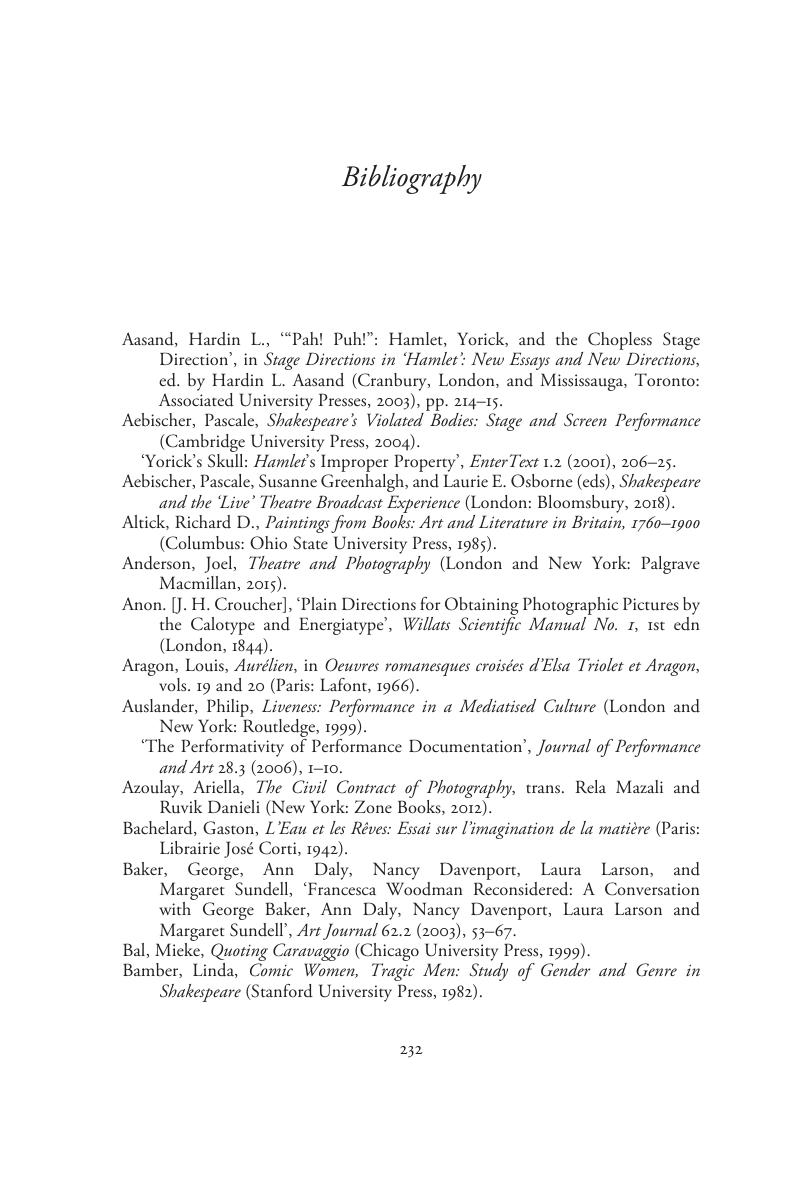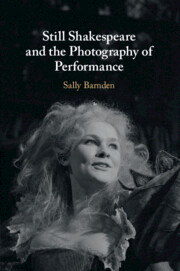Book contents
- Still Shakespeare and the Photography of Performance
- Still Shakespeare and the Photography of Performance
- Copyright page
- Dedication
- Contents
- Figures
- Acknowledgements
- Introduction: ‘Leave Not a Rack Behind’
- Part I Photographing Performers
- Part II Iconography, Photography, and Hamlet
- Bibliography
- Index
- References
Bibliography
Published online by Cambridge University Press: 05 December 2019
- Still Shakespeare and the Photography of Performance
- Still Shakespeare and the Photography of Performance
- Copyright page
- Dedication
- Contents
- Figures
- Acknowledgements
- Introduction: ‘Leave Not a Rack Behind’
- Part I Photographing Performers
- Part II Iconography, Photography, and Hamlet
- Bibliography
- Index
- References
Summary

- Type
- Chapter
- Information
- Still Shakespeare and the Photography of Performance , pp. 232 - 244Publisher: Cambridge University PressPrint publication year: 2019

